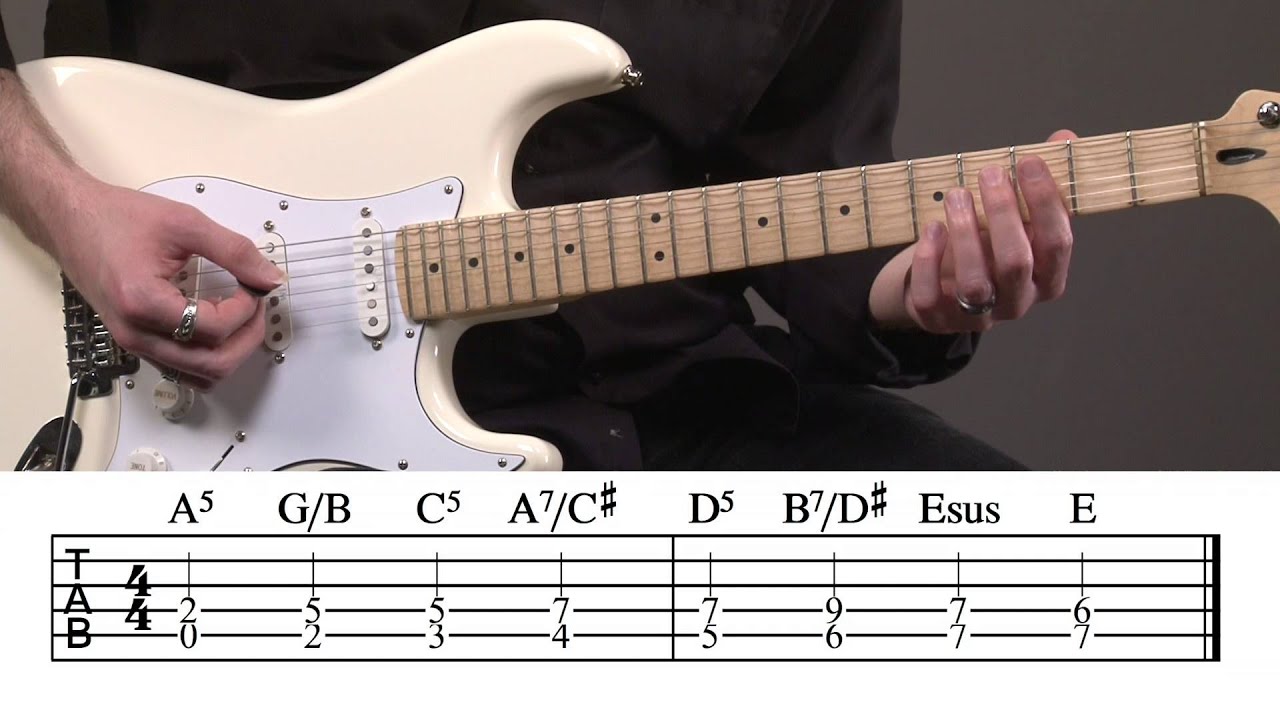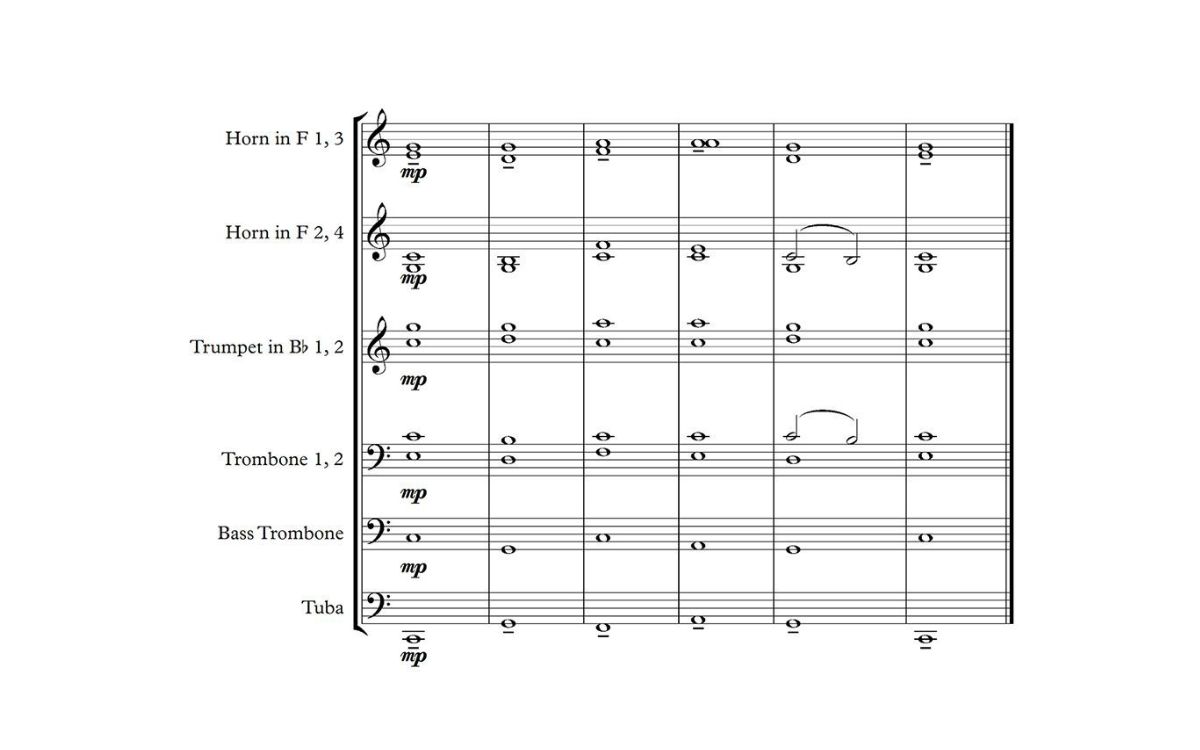Home>Instruments>Guitar>How To Write Guitar Riffs


Guitar
How To Write Guitar Riffs
Published: February 14, 2024
Learn how to write captivating guitar riffs with our expert tips and techniques. Master the art of creating memorable melodies and hooks on the guitar. Unlock your potential and elevate your playing skills today!
(Many of the links in this article redirect to a specific reviewed product. Your purchase of these products through affiliate links helps to generate commission for AudioLover.com, at no extra cost. Learn more)
Table of Contents
Introduction
Introduction
Are you an aspiring guitarist seeking to create captivating and memorable music? Crafting unique and compelling guitar riffs is a powerful way to express your musical creativity and leave a lasting impression on your audience. Whether you're a beginner or an experienced musician, understanding the art of writing guitar riffs is essential for developing your own distinct sound and style.
A guitar riff is a series of notes or chords that form a catchy, repetitive melody, typically serving as the foundation of a song. From iconic rock anthems to soul-stirring blues tunes, the guitar riff plays a pivotal role in defining the mood and character of a composition. Mastering the art of creating compelling riffs allows you to infuse your music with personality and emotion, setting you apart as a skilled and innovative guitarist.
In this comprehensive guide, we will delve into the intricacies of crafting captivating guitar riffs, exploring the creative process, technical aspects, and essential considerations for aspiring riff masters. From understanding the fundamental elements of a riff to harnessing the power of rhythm and scale selection, this guide will equip you with the knowledge and inspiration to elevate your riff-writing prowess.
Whether you're aiming to rock the stage with electrifying solos or serenade your audience with soulful melodies, the art of crafting guitar riffs is a journey that promises endless possibilities for musical expression and innovation. Join us as we embark on this enlightening exploration of the intricate world of guitar riff composition, where creativity knows no bounds and the strings resonate with the essence of musical ingenuity.
Understanding Guitar Riffs
Understanding Guitar Riffs
At the heart of every iconic guitar-driven song lies a mesmerizing riff that captivates the listener’s ear and lingers in their memory. Understanding the essence of guitar riffs is crucial for any guitarist aiming to craft compelling and impactful musical compositions. A guitar riff serves as the melodic and rhythmic cornerstone of a song, often repeating throughout the track and anchoring the musical arrangement.
When dissecting a guitar riff, it’s essential to recognize its role in establishing the sonic identity of a song. Riffs are not merely sequences of notes; they embody the mood, energy, and attitude of the music, shaping its sonic landscape and evoking emotive responses from the audience. Whether it’s the gritty power chords of a hard rock anthem or the soulful blues licks that tug at the heartstrings, the artistry of a guitar riff lies in its ability to convey a story and evoke powerful emotions.
Moreover, understanding the structure of a riff is pivotal for its effective composition. Riffs often comprise recurring motifs, catchy melodic phrases, and rhythmic patterns that create a sense of familiarity and continuity within a song. This repetitive nature is what makes a riff memorable and instantly recognizable, leaving an indelible imprint on the listener’s mind.
Furthermore, the interplay between melody and rhythm is a defining characteristic of a compelling guitar riff. The melodic elements infuse the riff with a distinct musical identity, while the rhythmic nuances dictate its groove and cadence. This harmonious fusion of melody and rhythm forms the bedrock of a captivating riff, infusing it with a sense of dynamism and infectious energy.
Understanding the anatomy of guitar riffs empowers aspiring musicians to deconstruct their favorite songs, analyze the techniques employed by legendary guitarists, and derive inspiration for their own musical endeavors. By unraveling the intricacies of renowned riffs, aspiring guitarists can glean valuable insights into the art of crafting compelling and evocative musical motifs that resonate with audiences.
Finding Inspiration
Finding Inspiration
Embarking on the creative journey of crafting guitar riffs often begins with the quest for inspiration. Whether you’re aiming to channel your emotions into a soul-stirring melody or infuse your music with an electrifying energy, seeking inspiration is a vital step in the riff-writing process. Inspiration can stem from a myriad of sources, ranging from personal experiences and emotions to the sonic tapestry of diverse musical genres.
One potent wellspring of inspiration for crafting guitar riffs lies in the rich tapestry of human emotions. Embracing the depth of your feelings and experiences can fuel the creation of poignant and evocative riffs that resonate with authenticity and raw emotion. Whether it’s the exuberance of joy, the pangs of heartache, or the fervor of determination, infusing these emotions into your musical compositions can imbue your riffs with a profound sense of relatability and depth.
Furthermore, drawing inspiration from diverse musical genres can expand your creative horizons and infuse your riff-writing endeavors with a rich tapestry of sonic influences. Exploring the nuances of rock, blues, jazz, funk, and other genres can expose you to a myriad of melodic and rhythmic techniques, fostering a versatile and eclectic approach to crafting riffs. By immersing yourself in the sonic landscapes of different musical styles, you can amalgamate diverse elements to carve out a unique and distinctive musical identity.
Moreover, the world around us serves as a boundless wellspring of inspiration for crafting guitar riffs. From the breathtaking vistas of nature to the bustling urban milieu, the sights, sounds, and experiences of the world can ignite the creative spark within musicians. Observing the interplay of light and shadow, the ebb and flow of life, and the myriad emotions that color human existence can kindle the flames of creativity, inspiring riffs that encapsulate the essence of these profound moments.
Ultimately, finding inspiration for crafting guitar riffs is an introspective and exploratory endeavor that invites musicians to delve into the depths of their emotions, immerse themselves in diverse musical influences, and embrace the myriad wonders of the world around them. By nurturing a receptive and inquisitive mindset, aspiring riff creators can cultivate a fertile ground for inspiration to flourish, paving the way for the birth of captivating and emotive musical motifs.
Choosing the Right Scale
Choosing the Right Scale
When it comes to crafting captivating guitar riffs, the choice of scale plays a pivotal role in defining the tonal palette and melodic character of the composition. The scale forms the fundamental framework upon which the riff is built, dictating the specific notes, intervals, and tonal colors that permeate the musical landscape. As such, selecting the right scale is a critical decision that shapes the emotive impact and sonic allure of the riff.
One of the most widely employed scales in riff composition is the pentatonic scale, renowned for its versatility and expressive potential. Embraced across various musical genres, the pentatonic scale’s five-note structure lends itself to crafting soulful, bluesy riffs as well as high-octane, rock-infused melodies. Its inherent melodic richness and emotive resonance make it a favored choice for guitarists seeking to imbue their riffs with a timeless and evocative allure.
For those venturing into the realms of rock and metal, the natural minor scale, also known as the Aeolian mode, offers a compelling tonal landscape for crafting intense and emotive riffs. Characterized by its haunting and melancholic essence, the natural minor scale provides a fertile ground for weaving intricate and emotionally charged melodies that resonate with raw, visceral power.
Furthermore, the harmonic minor scale presents a captivating choice for infusing riffs with an exotic and enigmatic allure. Widely embraced in genres such as flamenco, classical, and metal, the harmonic minor scale’s distinct intervallic structure and poignant tonal flavors empower guitarists to create riffs brimming with dramatic tension and captivating allure.
Exploring the harmonic intricacies of the major scale can also yield a treasure trove of melodic possibilities for crafting guitar riffs. The major scale’s buoyant and uplifting tonal qualities can infuse riffs with a sense of joyous exuberance and melodic optimism, making it a compelling choice for musicians seeking to evoke a vibrant and uplifting ambiance through their compositions.
Ultimately, the choice of scale serves as a profound artistic decision that shapes the sonic identity and emotive resonance of a guitar riff. By delving into the nuanced characteristics of various scales and modes, aspiring riff creators can harness the boundless potential of melodic expression, sculpting riffs that resonate with depth, emotion, and captivating allure.
Utilizing Rhythm and Timing
Utilizing Rhythm and Timing
While melody lays the foundation for a guitar riff’s emotive impact, the interplay of rhythm and timing infuses it with an infectious groove and dynamic cadence. Harnessing the rhythmic dimensions of a riff is essential for captivating listeners and propelling them into the heart of the music’s pulsating energy.
One of the key elements in utilizing rhythm to enhance a guitar riff is the strategic placement of accents and syncopated patterns. By accentuating specific notes within the riff and introducing syncopated rhythms, guitarists can instill a sense of vitality and unpredictability, elevating the riff’s rhythmic dynamism and imbuing it with an irresistible allure.
Moreover, exploring diverse time signatures and rhythmic subdivisions can breathe new life into a guitar riff, infusing it with a sense of rhythmic complexity and intrigue. Venturing beyond the confines of standard 4/4 time opens up a realm of rhythmic possibilities, allowing musicians to craft riffs that defy convention and unfold with captivating rhythmic diversity.
Furthermore, the judicious use of rests and pauses within a riff can wield a profound impact on its rhythmic cadence and emotive resonance. Introducing moments of silence amidst the melodic tapestry creates a sense of tension and release, adding depth and nuance to the rhythmic fabric of the riff. These pregnant pauses serve as punctuation marks within the musical narrative, heightening the riff’s expressive impact and captivating the listener’s attention.
Additionally, exploring rhythmic motifs and ostinato patterns can infuse a guitar riff with a sense of hypnotic repetition and rhythmic drive. By weaving recurring rhythmic motifs into the fabric of the riff, guitarists can establish a compelling rhythmic foundation that propels the music forward with unwavering momentum and infectious energy.
Ultimately, the art of utilizing rhythm and timing in crafting guitar riffs empowers musicians to sculpt melodies that pulsate with rhythmic vitality and dynamic allure. By embracing the rhythmic intricacies of their compositions, aspiring riff creators can unleash a torrent of infectious grooves and captivating cadences, enveloping their audience in a sonic tapestry that resonates with irresistible rhythmic magnetism.
Adding Variation and Dynamics
Adding Variation and Dynamics
Infusing guitar riffs with variation and dynamics is an indispensable aspect of crafting captivating and evocative musical compositions. By introducing nuanced changes in melodic motifs, tonal textures, and expressive dynamics, musicians can breathe life into their riffs, imbuing them with a sense of depth, emotional resonance, and captivating allure.
One pivotal technique for adding variation to a guitar riff is the strategic incorporation of melodic embellishments and ornamentations. Whether it’s tasteful bends, expressive vibrato, or articulate hammer-ons and pull-offs, these embellishments infuse the riff with a sense of expressive flair and melodic richness, elevating its emotive impact and captivating the listener’s ear.
Moreover, exploring the interplay between clean and distorted tones can yield a treasure trove of tonal variation within a riff. Transitioning from crystalline, clean tones to searing, overdriven textures introduces a compelling sonic contrast, infusing the riff with a sense of tonal dynamism and emotive depth. This tonal interplay adds a captivating dimension to the riff, enhancing its sonic palette and evocative allure.
Furthermore, the strategic utilization of dynamics, such as subtle volume swells, crescendos, and diminuendos, can imbue a guitar riff with a sense of narrative progression and emotive intensity. By modulating the volume and intensity of the riff, musicians can craft compelling musical arcs that ebb and flow with evocative dynamism, drawing the listener into a captivating sonic journey.
Introducing rhythmic variation within the riff can also elevate its dynamic allure, infusing it with a sense of rhythmic diversity and unpredictability. By incorporating intricate rhythmic patterns, syncopated accents, and subtle variations in note durations, guitarists can imbue their riffs with a pulsating rhythmic vitality that captivates the listener’s senses and propels the music forward with infectious energy.
Ultimately, the art of adding variation and dynamics to guitar riffs empowers musicians to sculpt compositions that resonate with emotive depth, tonal richness, and captivating allure. By embracing the myriad facets of musical expression and sonic exploration, aspiring riff creators can craft compositions that transcend the confines of convention, enveloping their audience in a mesmerizing tapestry of melodic variation, tonal dynamics, and rhythmic vitality.
Tips for Crafting Memorable Riffs
Tips for Crafting Memorable Riffs
Crafting memorable guitar riffs is an art form that requires a blend of creativity, technical prowess, and emotive depth. Whether you’re embarking on your riff-writing journey or seeking to elevate your compositional skills, incorporating these valuable tips can empower you to sculpt captivating and unforgettable musical motifs that resonate with audiences.
- Embrace Melodic Singularity: Infuse your riffs with distinctive melodic motifs that linger in the listener’s memory. Strive to create melodic phrases that are instantly recognizable and resonate with emotive depth, leaving an indelible imprint on the listener’s consciousness.
- Explore Unconventional Tunings: Venturing into alternative guitar tunings can unlock a realm of sonic possibilities, allowing you to discover unique chord voicings, resonant drones, and evocative textures that breathe new life into your riff-writing endeavors.
- Embody Emotional Authenticity: Channel your personal experiences, emotions, and convictions into your riff compositions. Embracing emotional authenticity infuses your riffs with a profound sense of sincerity and relatability, forging a deep connection with your audience.
- Experiment with Articulation Techniques: Delve into the nuances of articulation, including slides, bends, and expressive vibrato, to imbue your riffs with a sense of dynamic expressiveness and melodic allure.
- Seek Inspirational Diversity: Draw inspiration from a diverse array of musical genres, cultures, and artistic mediums. Embracing a broad spectrum of influences enriches your creative palette, fostering a multifaceted approach to riff composition.
- Cultivate a Rhythmic Identity: Develop a rhythmic signature that distinguishes your riff compositions. Whether it’s through syncopated grooves, intricate rhythmic patterns, or pulsating ostinato motifs, infusing your riffs with a unique rhythmic identity sets them apart with captivating allure.
- Harness the Power of Silence: Integrate strategic pauses and rests within your riffs to create moments of tension and release. Embracing the art of silence enhances the rhythmic dynamism and emotive impact of your compositions.
- Collaborate and Iterate: Engage in collaborative musical endeavors and seek feedback from fellow musicians. Embracing a spirit of collaboration and iterative refinement empowers you to hone your riff-writing skills and expand your creative horizons.
By integrating these tips into your riff-writing process, you can embark on a transformative journey of musical exploration, innovation, and emotive expression. Embrace the boundless possibilities of riff composition, and let your creative ingenuity resonate through captivating and unforgettable musical motifs that leave an enduring legacy in the realm of music.
Conclusion
Conclusion
As we draw the curtains on this enlightening exploration of crafting guitar riffs, it’s evident that the art of riff composition transcends technical proficiency, delving into the realms of creativity, emotive expression, and sonic innovation. The journey of crafting captivating guitar riffs is a testament to the boundless potential of musical expression, inviting aspiring musicians to infuse their compositions with authenticity, depth, and captivating allure.
From understanding the fundamental elements of a riff to harnessing the power of rhythm, scale selection, and melodic variation, aspiring riff creators are empowered to embark on a transformative journey of sonic exploration. The tips and insights shared in this guide serve as beacons of inspiration, guiding musicians toward the creation of memorable and evocative musical motifs that resonate with audiences on a profound level.
It’s essential to recognize that the process of crafting guitar riffs is a deeply personal and introspective endeavor, inviting musicians to channel their emotions, experiences, and creative ingenuity into their compositions. Whether it’s the soul-stirring resonance of a blues-infused riff or the electrifying energy of a rock-driven melody, each riff bears the imprint of its creator’s musical identity and artistic vision.
Moreover, the journey of crafting guitar riffs is one that thrives on exploration, experimentation, and collaborative synergy. Engaging with diverse musical influences, embracing unconventional tunings, and seeking inspiration from the world at large enriches the creative tapestry of riff composition, fostering a dynamic and multifaceted approach to musical innovation.
As aspiring riff creators venture forth on their musical odyssey, it’s imperative to embrace the boundless possibilities of melodic expression, rhythmic dynamism, and tonal allure. Each note, each bend, and each rhythmic pulse weaves a narrative that resonates with the hearts and minds of listeners, transcending the confines of language to communicate emotions, stories, and experiences through the universal language of music.
In the symphony of musical creation, the guitar riff stands as a testament to the enduring power of melodic ingenuity and emotive resonance. It serves as a sonic beacon that illuminates the path toward musical innovation, inviting musicians to carve out their unique sonic identities and leave an indelible mark on the tapestry of musical history.
So, as you embark on your riff-writing endeavors, may your compositions resonate with the authenticity of your emotions, the depth of your experiences, and the boundless creativity that defines your musical journey. Let your guitar riffs echo with the essence of your artistic vision, captivating audiences and etching your name into the annals of musical greatness.











